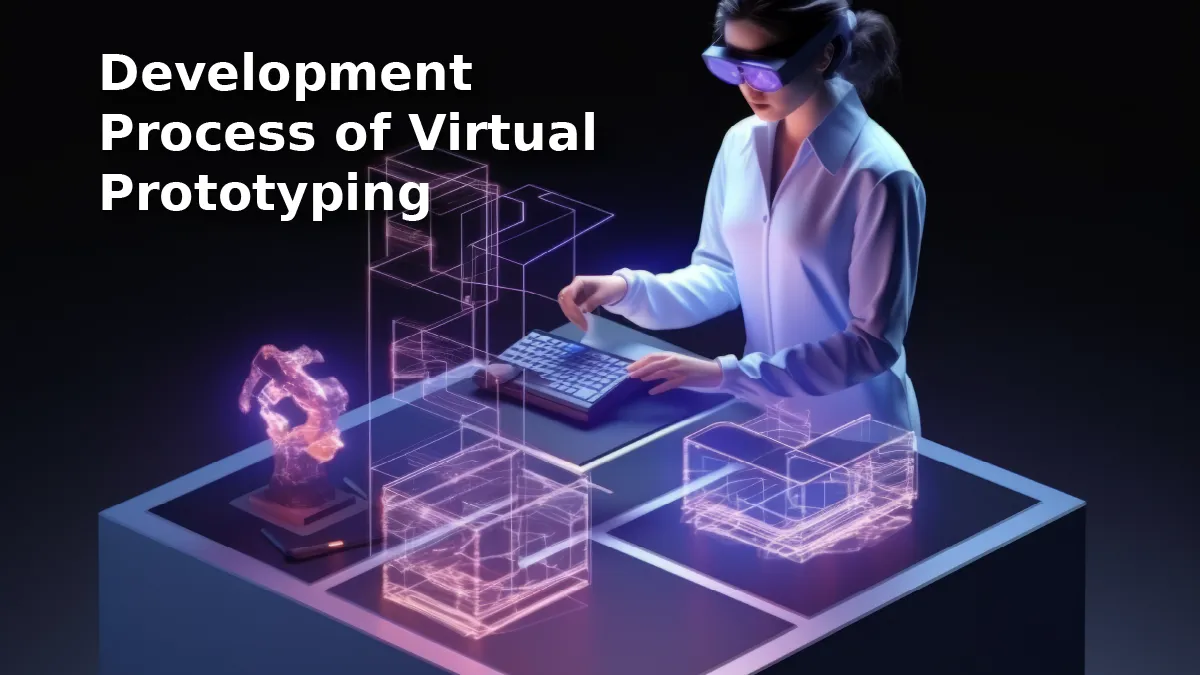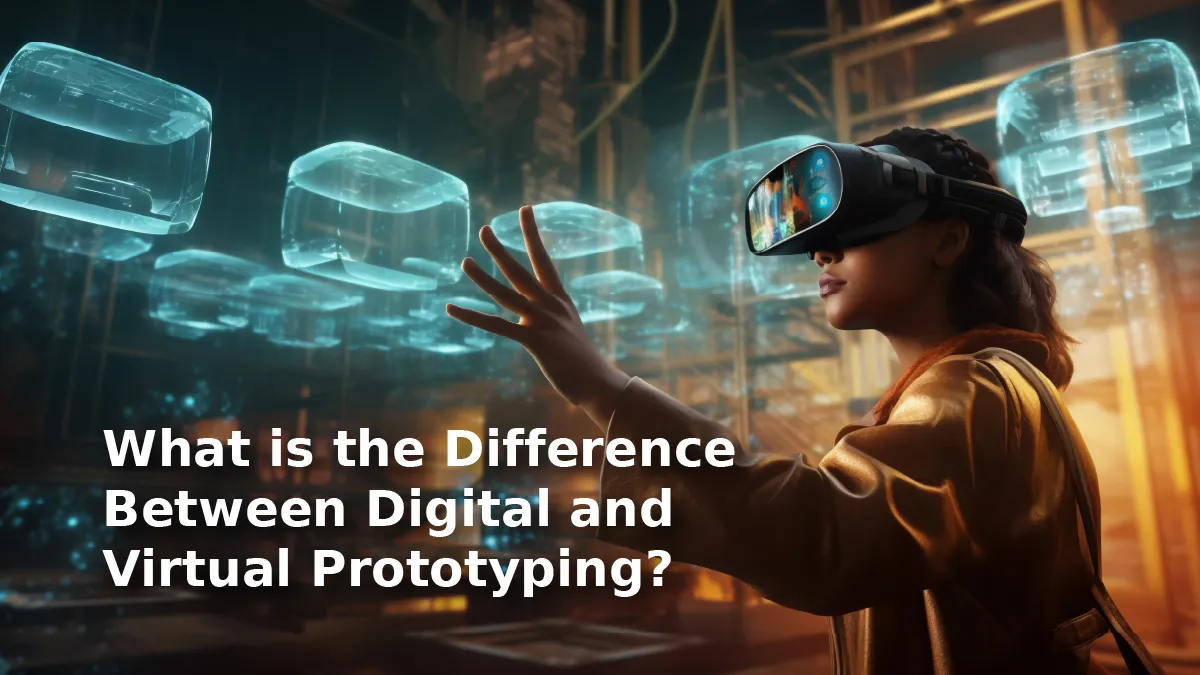Introduction
Virtual prototyping uses software tools to create digital models of products that can be tested in a virtual environment. This approach lets designers and engineers refine their ideas without physical prototypes. It makes the design process more efficient. Virtual prototypes simulate real-world conditions. This helps teams spot potential problems early in the development process. This, in turn, leads to improved product quality and lower costs.
Benefits of Virtual Prototyping
Cost Reduction: One of the primary benefits of virtual prototyping is its ability to lower development costs. Traditional prototyping methods often require substantial investment in materials and labor for physical prototypes. In contrast, virtual prototypes can be modified and tested repeatedly at a fraction of the cost. This minimizes waste and resource use.
Time Efficiency: Virtual prototyping speeds up the development process. Engineers can quickly revise designs, run simulations, and test ideas. They no longer have to wait for physical prototypes. This rapid iteration is essential in today’s fast-paced market where time to market is a critical factor for success.
Enhanced Design Precision: Virtual prototyping allows for detailed analysis and testing in conditions that are hard to recreate with physical prototypes. This lets engineers thoroughly explore different design options before finalizing the product.
Parallel Development: Virtual prototyping supports concurrent engineering, especially in embedded software development. Software teams can start their work alongside hardware development. Traditionally, they had to wait for the hardware to be ready. This overlap speeds up the entire development process and improves collaboration between teams.
Improved Product Quality: Virtual prototypes allow for thorough testing and validation before production. This helps to spot flaws early in the design process. Such a proactive approach greatly reduces the chances of costly recalls or warranty claims after the product is launched.
Development Process of Virtual Prototyping

Virtual prototyping uses computer simulations to create and test digital models before physical manufacturing. The integration of virtual prototyping in the product design process changes how teams approach development:
- Initial Conceptualization – The process begins with conceptualization. Designers use advanced software to create 3D models of the product. This allows for immediate feedback and adjustments, laying the groundwork for further development.
- Simulation and Testing – After creating a virtual prototype, it is rigorously tested in simulations. This stage evaluates how the product behaves under various conditions, helping teams identify potential issues early.
- Iteration and Refinement – Virtual prototyping enables quick revisions based on simulation results. Engineers can refine designs repeatedly until they meet specifications. This reduces the time spent on redesigns and ensures alignment with performance expectations.
- Final Validation – Before production, virtual prototypes are validated against real-world expectations to confirm functionality and performance. This early validation helps avoid costly changes later in the production cycle.
- Integration with Software Development – Virtual prototyping supports parallel development, especially in embedded software. Software teams can start their work alongside hardware development, speeding up the overall process and enhancing collaboration.
- Continuous Improvement – The process extends beyond product launch into lifecycle management. Feedback from market releases can lead to improvements or new features through virtual prototypes, ensuring that products remain competitive.
The development process of virtual prototyping marks a significant shift from traditional methods. It allows for more efficient product design and testing. It enhances creativity and fosters innovation by allowing teams to experiment with designs that may have been too costly or time-consuming to prototype physically.
Also Read: A Holistic Guide to ServiceOps
What is the Difference Between Digital and Virtual Prototyping?

Digital prototyping and virtual prototyping are often used interchangeably. However, they have distinct differences:
- Digital prototyping means creating a digital version of a product. It may not include interactive simulations or thorough testing. It mainly serves as a visual aid rather than a functional model.
- Virtual prototyping involves creating interactive models that simulate real-world behavior under various conditions. This method focuses on testing and validation in a virtual environment. It offers deeper insights into product performance before manufacturing. It also enables teams to identify issues early on in the development process and refine designs effectively.
In summary, digital prototypes are initial sketches or models. Virtual prototypes allow full analysis and optimization during the entire development process. This distinction highlights the importance of using virtual prototyping for projects that require rigorous testing and validation to ensure high-quality final products.
Recent Developments in Virtual Prototyping
The adoption of virtual prototyping has significantly transformed product design & development across various industries, leading to notable advancements and case studies that highlight its impact. Some recent developments by companies in this field have been mentioned below:
- Companies like DELMIA have integrated virtual prototyping into their product lifecycle management (PLM) systems. This unified approach boosts operational efficiency. This integration allows for seamless collaboration from initial designs through testing and validation, ultimately speeding up the development process.
- Agilent Technologies applied virtual prototyping in designing cooling systems for high-speed oscilloscopes. This helped in improving performance and reliability.
- Miele enhanced its washer-disinfector machines by simulating their operational characteristics early in the design cycle. This led to better functionality.
Conclusion
The adoption of virtual prototyping represents a major change in product design & development across various industries. This innovative approach helps companies simplify processes, cut costs, improve product quality, and speed up time to market. Advanced simulation tools can help organizations compete in a complex tech landscape. The benefits of virtual prototyping make it crucial for modern product development. Ultimately, virtual prototypes help teams address today’s manufacturing challenges. They enable successful product design and delivery.




